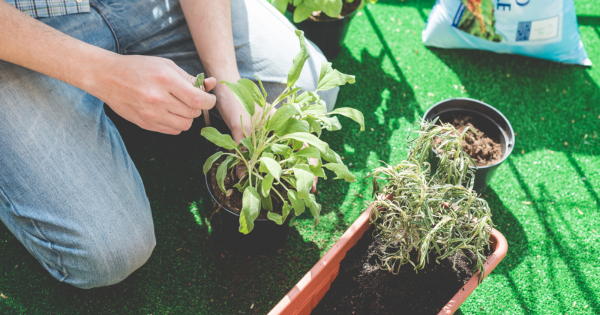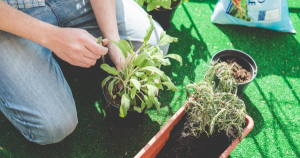Spring is officially here and for many homeowners that means refreshing their gardens to get their yards ready for the warmer weather. If you’re interested in starting a garden of your own, you’re not alone. Compared to spring 2019, up to 36% more people in the U.S. are growing their own herbs and vegetables this year.
Of course, starting a garden can be pricey if you’re not careful. The cost of fertilizer, pots, and new plants can add up quickly, and if you’re among the 45% of new homeowners of the millennial generation, chances are you don’t have a big budget to work with. The good news is that there are a few key ways you can grow a garden this spring while sticking to a budget. Here’s how you can get your thumb green this season while keeping your own green in your wallet.
Make use of seeds
When you’re starting to grow a garden, it can be tempting to invest in full-grown plants or even seedlings to help make flowers and vegetables grow faster. However, if you’re on a budget, it’s better to stick with seeds. You can buy a single pack of 100 seeds for just $2 or less. That’s 100 future plants for $2. You can grow your seeds inside using eggshell halves or recycled containers until seedlings appear and then transfer them outside once the weather is warmer.
Buy plants in the off-season
One of the best times of the year to buy plants for your garden is actually during the autumn because nurseries will have markdowns for plants. Approximately 35% of customers will find out about local businesses from seeing their signs while passing and you can typically find local nurseries and plant sales on side-streets, especially in rural areas. You may be able to find plants for lower prices during the early spring, too, when it’s still too chilly outside to put your plants in the ground.
Make your own compost pile
You may need to invest in some higher quality soil when you’re first beginning your garden, but you can save money in the long run by beginning a compost pile now. In six months, you’ll have your own compost to add to your garden soil without having to rely on chemicals or store-bought fertilizer. To add some nutrients to your soil right now, dig a small hole in your garden and add coffee grounds and crushed eggshells. This will give the soil a boost of nitrogen and calcium to help improve the health of your new plants.
Buy secondhand garden tools
Facebook Marketplace, Craigslist, and eBay are goldmines when it comes to secondhand gardening tools. You don’t need to invest in brand new gardening tools to get the job done right. All you need to do is make sure that you’re caring for your tools properly. Some homeowners keep their yard tools in a shed, which can be a good investment on its own. A wooden shed typically lasts between 15 to 20 years.
However, if you’re working with a small yard, you can keep your garden tools in a secure storage box in your garage or closet. Use a stiff bristle brush and warm water to clean any dirt from your tools. Rinse them and then dry them off. Keeping dirt off your tools will help to keep rust at bay, which makes your tools last longer.
Starting a garden for the first time can be intimidating, especially when you’re on a budget. But by following the tips above, you can get your garden going without even spending a small fortune.


